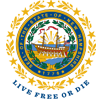Roots of the Conservation Land Stewardship Program
Program History and Milestones.
1987: During a time of unprecedented development throughout the state, Senate Bill 1 was signed into law creating the Land Conservation Investment Program (LCIP). RSA 221-A defined the program and was later replaced by RSA 162-C.
1987 - 1993: The LCIP, in cooperation with the Trust for New Hampshire Lands (a private partner), permanently protected approximately 100,000 acres of land. The acquisition phase of the program ended.
1993: A dedicated Land Conservation Endowment (LCE - RSA 162-C:8) was established with public and private contributions to permanently fund a stewardship program to provide oversight of the lands acquired through LCIP. The LCE continues to fund the stewardship work of CLS and will do so in perpetuity.
The authority for the LCIP was transferred from the LCIP Board of Directors to the Council on Resources and Development (CORD) in accordance with RSA 162-C.
2000s: CLSP and CORD entered into Memoranda of Agreements (MOAs) with NH Fish and Game, Department of Natural and Cultural Resources, Department of Justice, and Department of Agriculture. These MOAs achieved two important goals. First, they assigned stewardship and monitoring responsibilities for select properties to CLSP. Second, for newer non-LCIP properties, it allowed for contributions to be added to the LCE by other state agencies as a permanent funding source to support stewardship and monitoring efforts.
2004: The name of the program was changed from LCIP to CLSP to reflect the continuing growth and added responsibilities of the program through the addition of agreements with agencies to steward and monitor non-LCIP conservation easements, and to distinguish the program from the current Land and Community Heritage Program (LCHIP).
2021: In July 2021 CLSP became a separate state agency, last housed within the Office of Strategic Initiatives.



